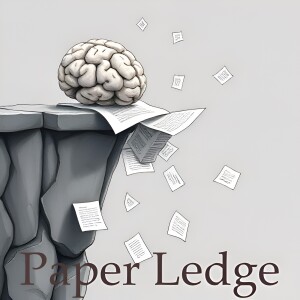
- Podcast Features
-
Monetization
-
Ads Marketplace
Join Ads Marketplace to earn through podcast sponsorships.
-
PodAds
Manage your ads with dynamic ad insertion capability.
-
Apple Podcasts Subscriptions Integration
Monetize with Apple Podcasts Subscriptions via Podbean.
-
Live Streaming
Earn rewards and recurring income from Fan Club membership.
-
Ads Marketplace
- Podbean App
-
Help and Support
-
Help Center
Get the answers and support you need.
-
Podbean Academy
Resources and guides to launch, grow, and monetize podcast.
-
Podbean Blog
Stay updated with the latest podcasting tips and trends.
-
What’s New
Check out our newest and recently released features!
-
Podcasting Smarter
Podcast interviews, best practices, and helpful tips.
-
Help Center
-
Popular Topics
-
How to Start a Podcast
The step-by-step guide to start your own podcast.
-
How to Start a Live Podcast
Create the best live podcast and engage your audience.
-
How to Monetize a Podcast
Tips on making the decision to monetize your podcast.
-
How to Promote Your Podcast
The best ways to get more eyes and ears on your podcast.
-
Podcast Advertising 101
Everything you need to know about podcast advertising.
-
Mobile Podcast Recording Guide
The ultimate guide to recording a podcast on your phone.
-
How to Use Group Recording
Steps to set up and use group recording in the Podbean app.
-
How to Start a Podcast
-
Podcasting
- Podcast Features
-
Monetization
-
Ads Marketplace
Join Ads Marketplace to earn through podcast sponsorships.
-
PodAds
Manage your ads with dynamic ad insertion capability.
-
Apple Podcasts Subscriptions Integration
Monetize with Apple Podcasts Subscriptions via Podbean.
-
Live Streaming
Earn rewards and recurring income from Fan Club membership.
-
Ads Marketplace
- Podbean App
- Advertisers
- Enterprise
- Pricing
-
Resources
-
Help and Support
-
Help Center
Get the answers and support you need.
-
Podbean Academy
Resources and guides to launch, grow, and monetize podcast.
-
Podbean Blog
Stay updated with the latest podcasting tips and trends.
-
What’s New
Check out our newest and recently released features!
-
Podcasting Smarter
Podcast interviews, best practices, and helpful tips.
-
Help Center
-
Popular Topics
-
How to Start a Podcast
The step-by-step guide to start your own podcast.
-
How to Start a Live Podcast
Create the best live podcast and engage your audience.
-
How to Monetize a Podcast
Tips on making the decision to monetize your podcast.
-
How to Promote Your Podcast
The best ways to get more eyes and ears on your podcast.
-
Podcast Advertising 101
Everything you need to know about podcast advertising.
-
Mobile Podcast Recording Guide
The ultimate guide to recording a podcast on your phone.
-
How to Use Group Recording
Steps to set up and use group recording in the Podbean app.
-
How to Start a Podcast
-
Help and Support
- Discover

Computer Vision - GUI-R1 A Generalist R1-Style Vision-Language Action Model For GUI Agents
Hey PaperLedge crew, Ernis here, ready to dive into some seriously cool tech that could change how we interact with our computers and phones! Today, we're talking about making computers truly smart assistants, the kind that can actually do things for us, not just understand our commands.
Think about it: we’ve all dreamed of a world where we can just tell our devices, "Hey, book me a flight to Cancun next Tuesday," and it happens, seamlessly navigating airline websites, comparing prices, and confirming the booking. But getting computers to actually perform these complex tasks using Graphical User Interfaces – you know, all the buttons and menus we click on – is proving to be a real challenge.
Traditionally, researchers have been using a method called "supervised fine-tuning." Imagine teaching a dog new tricks by showing it tons of examples – "Sit," then you physically push its butt down a million times. This is similar to how they've been training AI: feeding it mountains of data showing it how to interact with different GUIs. But, like teaching that dog, it takes forever and the dog only knows that one trick. What happens when you ask it to "Stay"? It's clueless!
The problem is that these AI models struggle to understand the essence of the GUI and can't easily adapt to new interfaces. It's like they only know how to push specific buttons on a specific website, but when the website updates, or you try to use it on a different platform, the AI gets completely lost.
Now, here's where things get interesting. A new paper introduces a technique called \name (they didn't say how to pronounce it, so let's just call it "Project Awesome" for now!). Project Awesome takes a completely different approach, drawing inspiration from how AI models are trained for complex reasoning tasks, think like playing Go or Chess. The key is reinforcement learning.
Instead of showing the AI every single step, Project Awesome lets the AI learn by doing and provides feedback based on the outcome. It's like teaching a kid to ride a bike: you don't hold them up the whole time; you let them wobble and fall, but you give them pointers on how to balance better. Project Awesome uses this method to train the AI to navigate GUIs.
Here's the real kicker: Project Awesome uses a "unified action space rule modeling." Think of it like creating a universal set of instructions for interacting with any GUI. Instead of memorizing specific buttons, the AI learns general rules, like "find the search bar" or "click the confirm button," which can be applied across different platforms (Windows, Mac, Android, Web – you name it!).
And the results? Project Awesome crushes the competition, using only a tiny fraction of the data – we're talking 0.02% compared to other methods! It's like learning to speak a language fluently by immersing yourself in a week-long intensive course instead of memorizing a dictionary for years.
"These results demonstrate the immense potential of reinforcement learning based on unified action space rule modeling in improving the execution capabilities of LVLMs for real-world GUI agent tasks."So, why should you care about this research? Well...
- For the average user: Imagine a world with truly helpful AI assistants that can handle your everyday digital tasks, freeing up your time and reducing frustration.
- For developers: This technology could lead to more user-friendly software and automated testing tools.
- For businesses: Imagine automating repetitive tasks, improving customer service, and creating more efficient workflows.
Project Awesome is a significant step towards making our digital lives easier and more efficient.
Some thought-provoking questions:
- Could this technology eventually replace the need for traditional software testing?
- What are the ethical implications of giving AI so much control over our digital interactions? Could it be used to manipulate users?
- How far away are we from a truly universal GUI agent that can seamlessly navigate any interface, regardless of platform or design?
That's all for this episode of PaperLedge! Let me know what you think of Project Awesome, and what kind of future you envision for AI assistants in the comments below!
Credit to Paper authors: Xiaobo Xia, Run Luo
More Episodes
Create your
podcast in
minutes
- Full-featured podcast site
- Unlimited storage and bandwidth
- Comprehensive podcast stats
- Distribute to Apple Podcasts, Spotify, and more
- Make money with your podcast
It is Free
- Privacy Policy
- Cookie Policy
- Terms of Use
- Consent Preferences
- Copyright © 2015-2025 Podbean.com





